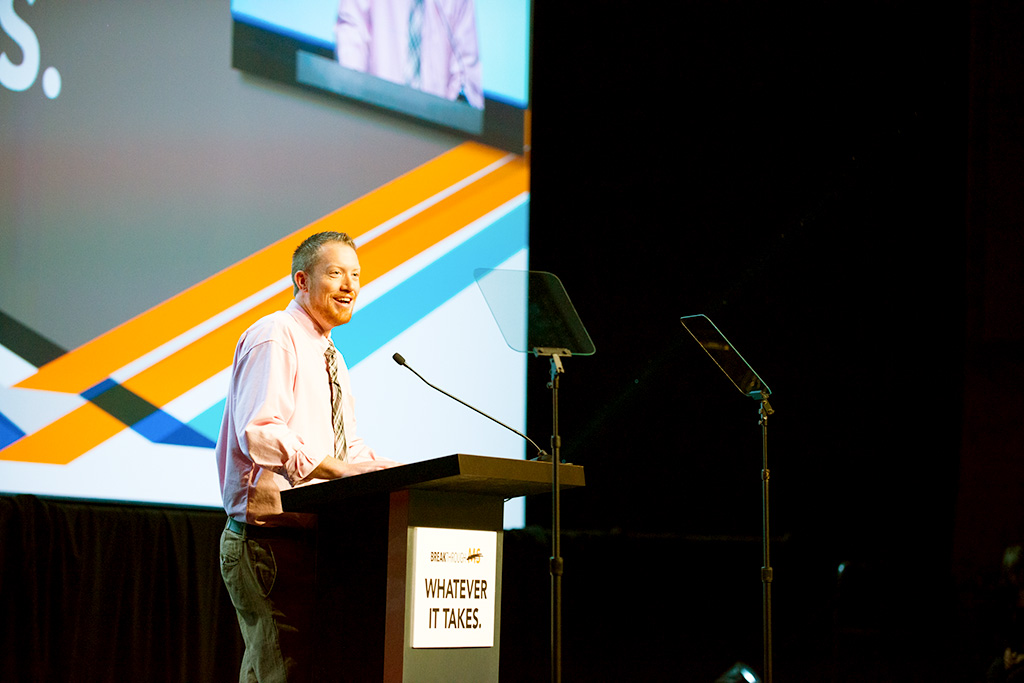
Decades before Colorado State University researcher Brett Fling started finding innovative ways to help multiple sclerosis patients improve mobility, the disease was top of mind.
“My mom has had MS for 30 years and is in pretty good shape, and it’s relatively well controlled by medication, so most days you’d never know she has it,” Fling said. “Her sister, who was much younger, had a much more progressive form of it. She was a wheelchair user very rapidly following her diagnosis and passed away from complications due to MS about five years ago.
“And that is one of those things that really struck me when I was a teenager was that you both have the same thing, and one of you is up here and one of you is down here. It just seemed so radically different; I didn’t get it.”
That thought fueled Fling’s motivation to study MS, which affects more than 900,000 Americans and more than 2.5 million people worldwide. Now, research at CSU’s Sensorimotor Neuroimaging Laboratory in the Department of Health and Exercise Science includes having MS patients walk on a split-belt treadmill to get people’s “bad leg” to work harder to catch up to their “good leg.”
Fling said that in about 10 minutes, people with MS are walking better. Unfortunately, about 10 minutes after that, he said they reverted to their usual walk.
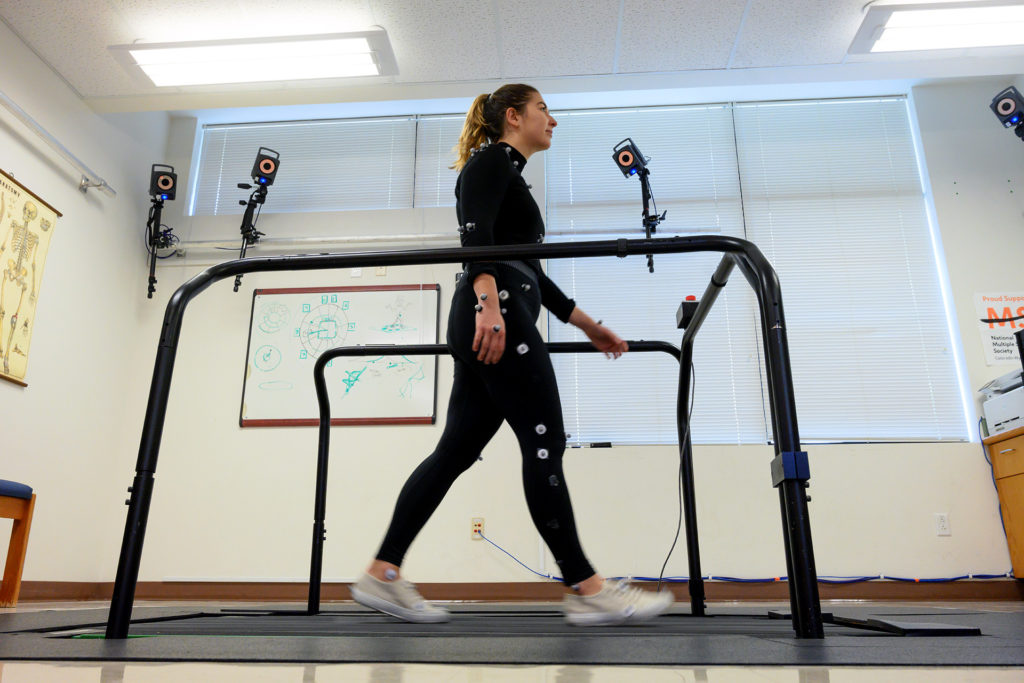
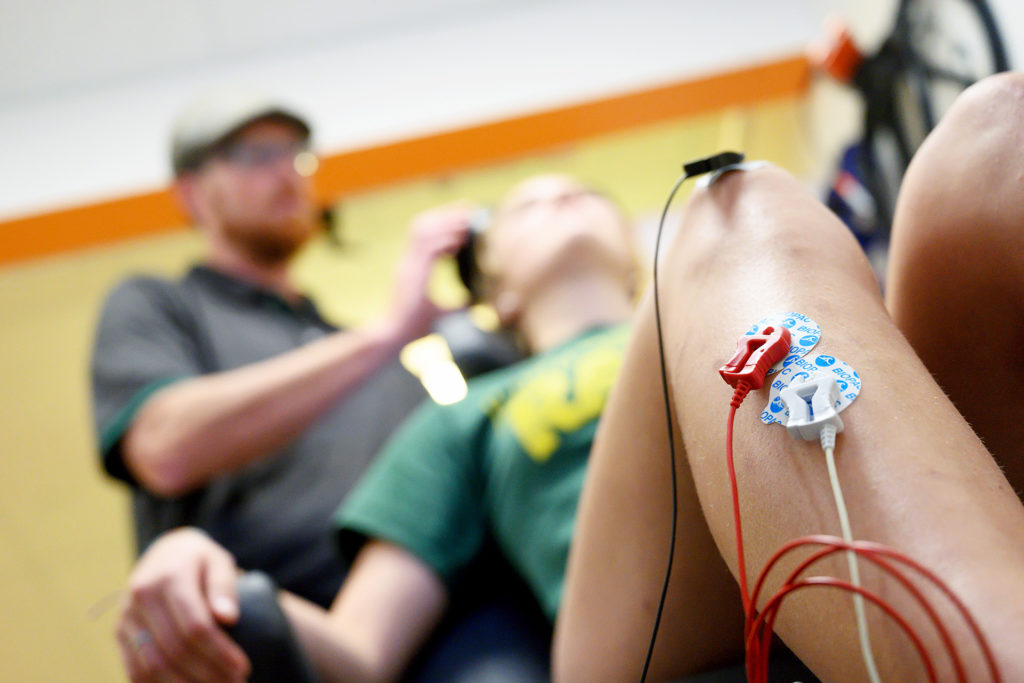
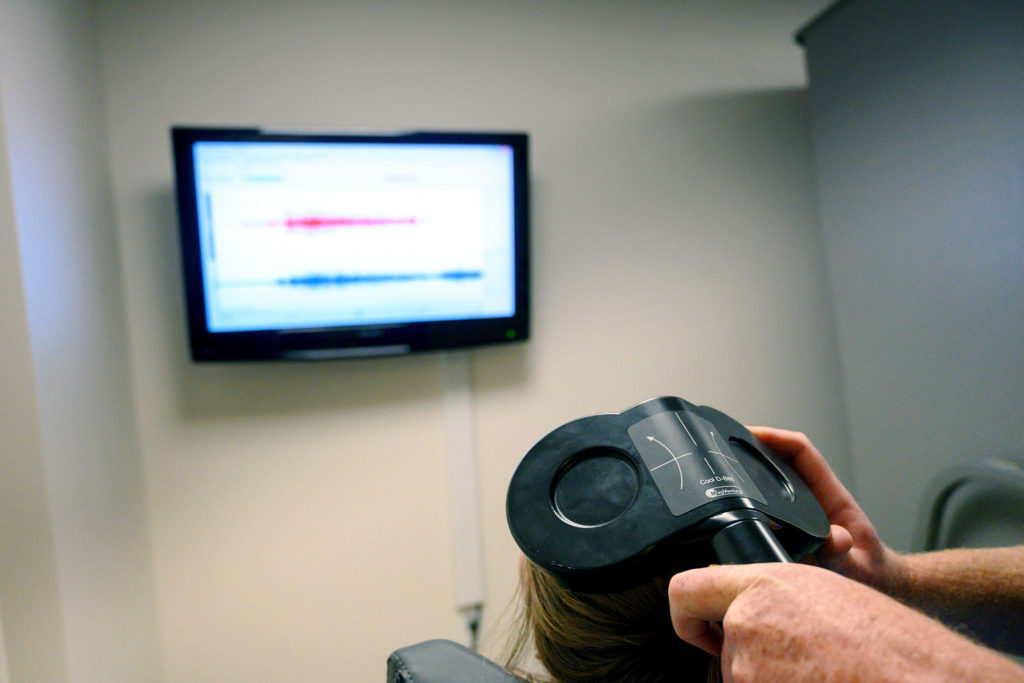
Taking improvement home
“The next step in our work is bringing folks back in again to do that same treadmill training paradigm, but now we pair it with wearable sensors that are providing them additional stimuli, said Fling, an associate professor in health and exercise science. “In our next set of studies, we’ll use something that’s called transcutaneous electric nerve stimulation. These TENS units are something you can buy over the counter. They are not particularly expensive.”
Fling said preliminary data suggests that imperceptible stimuli via electrodes to the muscle up to the brain and back aids patients in walking beyond the lab: “So while they’re out in the real world doing their regular stuff as they do on a daily basis and getting this constant stimuli and feedback from the muscles to the brain, we think it’s very likely we can then induce a much longer consistent effect of adapting their gait patterns.”
constant stimuli and feedback from the muscles to the brain, we think it’s very likely we can then induce a much longer consistent effect of adapting their gait patterns.”
After a career studying other conditions, Fling joined CSU in 2016. Since then, he’s been able to pivot to MS research at the Sensorimotor Neuroimaging Laboratory.
“This is always the No. 1 thing that I wanted to study,” said Fling, who discussed his academic journey during an episode of the podcast Health and Human Science Matters. “Everywhere I went for my training – I went to Massachusetts and Michigan and California and Oregon – and every time I went, someone said, ‘Well, we don’t do MS research.’ So, I studied typical aging. I studied Parkinson’s. I studied stroke. I studied all these other things.
“But I built up a skill set with the approaches that we use. So, by the time I got to see CSU, I was able to say, ‘Great, now I get to do what I want.’ ”

Working with students
Fling works with multiple students in related MS studies, including Chris Patrick, Andrew Hagen, and master’s student Jordan Acosta, who won a distinguished graduate research award at the College of Health and Human Sciences Research Day for her poster, “The Transcallosal Highway: The ipsilateral silent period as a neural biomarker for impaired corpus callosum communication in persons with multiple sclerosis.” Fling said people with MS can still have effective communication between the two hemispheres of the brain.
Fling said Acosta heads up “transcranial magnetic stimulation” that happens on days apart from the split-belt treadmill training. That part seeks to identify people who will respond well to intervention versus those who don’t respond well or even get worse.
But like Fling, Acosta said the research is more about people than data. She said the best part of her work is interacting with people and progressing the understanding of MS to find potential rehabilitation strategies to improve individuals’ quality of life.
“Although this is our research, individuals with MS are battling various symptoms and their disease 24/7,” Acosta said. “This understanding is the foundation for our work and the career I will pursue in the future. We are passionate about discovering ways to help alleviate any aspects we can, and always try to provide support beyond the realms of the lab.”
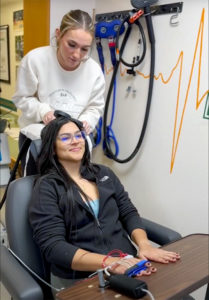
Social media video shows participation
One participant, Francesca Vargas, posted a YouTube video about her experience as an MS patient in the study.
“She’s a very representative individual with MS,” Fling said, adding that more women than men are diagnosed, and the average age of onset is 30 and subjects are usually healthy. “Francesca came in as a participant to try out these different split belt treadmill training components and she wanted to try the magnetic stimulation and have her brain ‘zapped’ as we joke.
“And while she did it, she is very hip and savvy on social media, because she filmed a wide variety of the different components that she did and posted it all over the place. It gives a nice, high-level summary of what we’re working on.”
Acosta said Fling is caring, selfless and supportive and that she’s honored to be part of his lab. She sees his deep connection to MS research.
“The personal ties he has to his research manifests by the compassion and leadership he exudes,” she said. “Dr. Fling does a remarkable job of executing high quality work, while also caring deeply about his students, colleagues, and participants as individuals.”

Speaking and organizing at conferences
Fling and some of his students spoke at the American Society for Neurorehabilitation conference in Charleston, S.C. in March. He’s also  chair of the organizing committee for the 12th annual International Symposium on Gait & Balance in Multiple Sclerosis, which meets April 15 in Denver.
chair of the organizing committee for the 12th annual International Symposium on Gait & Balance in Multiple Sclerosis, which meets April 15 in Denver.
“This symposium is an innovative educational project that will increase knowledge and effectiveness of health care professionals who serve people with MS,” Fling said. “The overall goal for this conference is to increase knowledge about the empirical research detailing the neural control of mobility in people with MS and how to translate this research into the clinic to better serve gait and balance dysfunction.”
Fling, who also is a founding board member of the non–profit Brain Health Center of the Rockies, sees his as a big-picture approach.
“What we’re trying to do is to use these very specialized and sensitive lab techniques to identify how your nervous system controls movement, but then be able to translate that and get it out of the lab,” he said. “It is really based around improving mobility, independence, function, and quality of life for folks.
“The majority of our work is in MS, but it is for people in general. We use a translational approach to go from the lab to the real world, so that we can impact people daily and not just write a bunch of papers.”
The Department of Health and Exercise Science is part of CSU’s College of Health and Human Sciences.